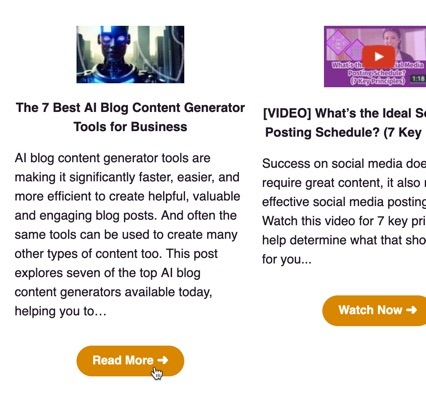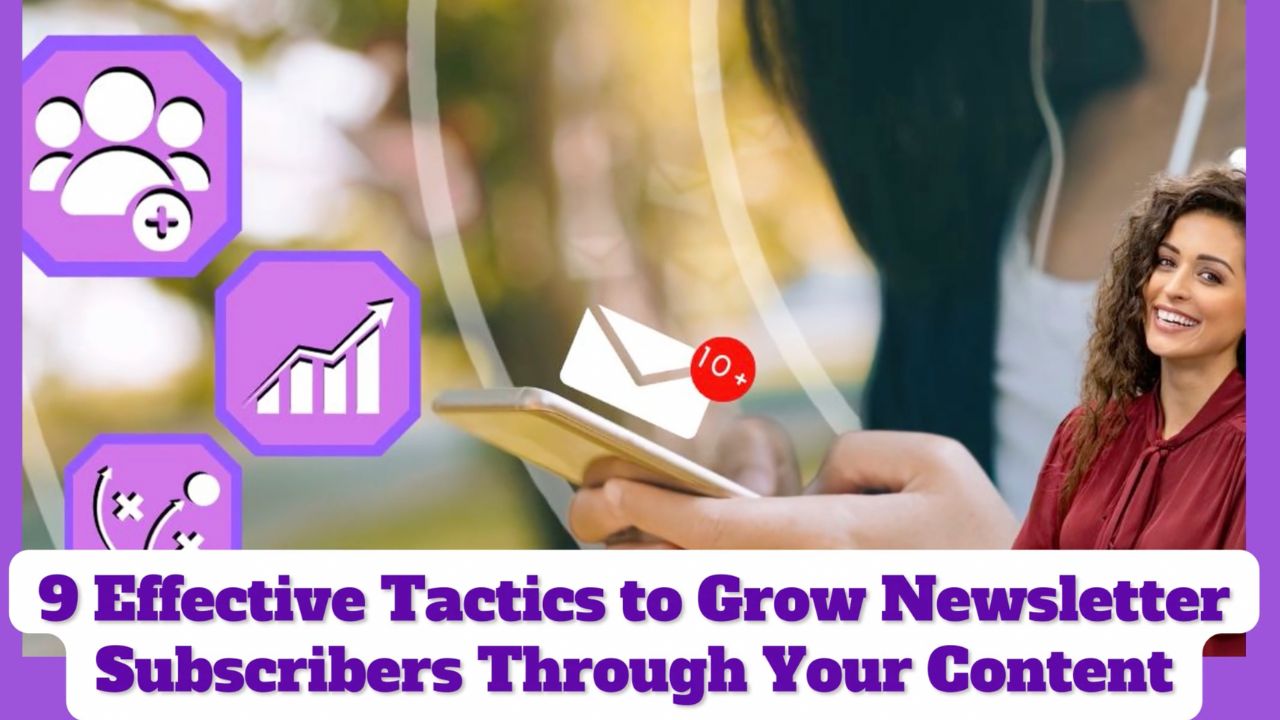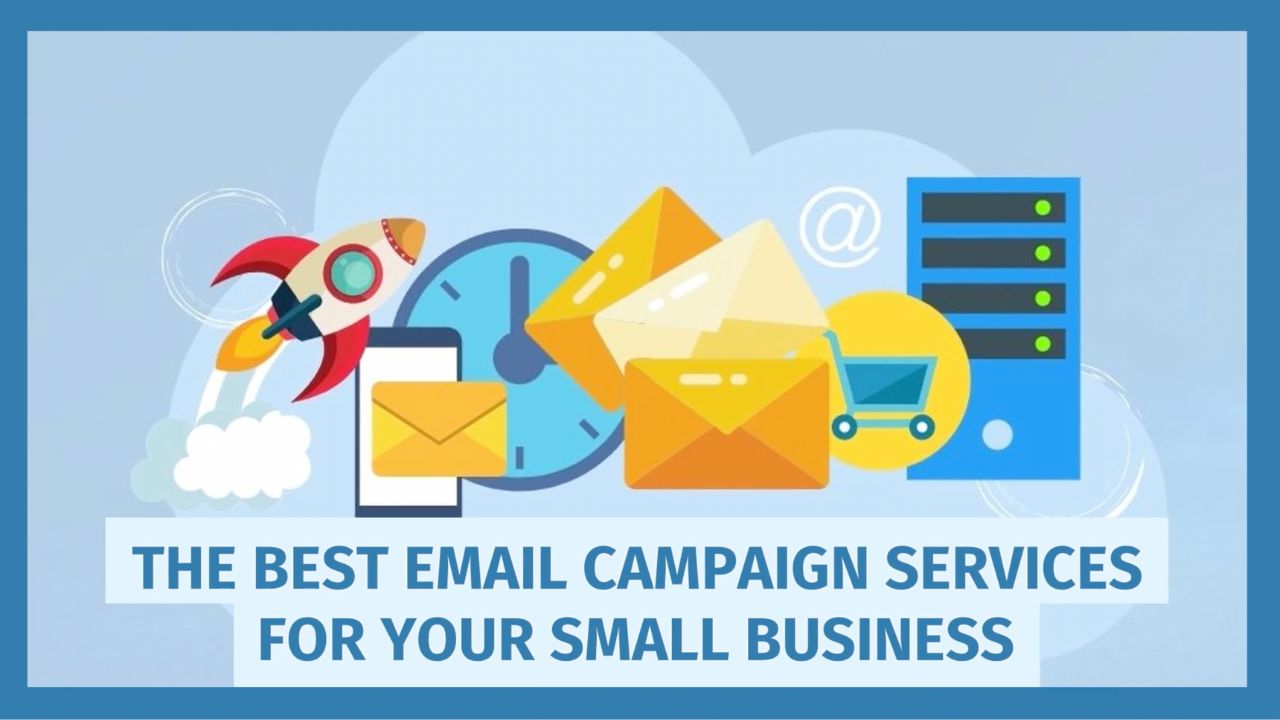Growing your newsletter subscribers can be challenging unless approached in the right way.
Where do you start?
You’re about to find out…
This post shares:
- 5 key principles for retaining existing subscribers (plug holes in the bucket first!)
- 9 easy ways to grow newsletter subscribers.
Shall we get started?...
Why Is Email Marketing So Important?
Despite continuous predictions about the death of email marketing, the actual data shows it remains one of the most profitable marketing channels around.
- Marketers are getting ROIs between 3200% and 4500% depending on industry.
In other words, spend $1 and receive anywhere from $32 to $45 in return.
Compare that to most other channels!
So growing your newsletter subscribers is crucial for business growth.
A rough benchmark quoted by many marketers is that each subscriber is worth around $1 a month in revenue.
An email list is also an owned marketing channel.
In contrast, you may have tons of YouTube subscribers or followers on Facebook, but they’re not channels you have any real control over.
Find yourself in breach of any number of policies on a social media channel, and you can find yourself frozen out overnight and unable to communicate with your audience.
Grow newsletter subscribers, and you don’t just build revenues but you build resilience.
What Is an Email Newsletter?
First, what exactly is an email newsletter?
Back in the day, these were more commonly referred to as ezines, but that term isn’t used as much today.
Essentially an email newsletter is content that your business regularly emails to your subscribers.
Here are some quick examples (or read more about them here):
It doesn’t have to be anything formal, ‘corporate’, or with a jazzed-up colorful design.
An email newsletter can be as simple as a plain text message.
It just depends on what resonates best with your audience, and what you want your style of communication to be.
The most important aspect is simply regular emailed communication with your subscribers so that they come to recognize you turning up in their inbox, develop a sense of trust and relationship with you, and in time come to purchase products and services from you.

If you’re unsure about what to include in it, base it on your existing content that you’re already publishing on a regular basis, such as on your blog, on YouTube, and so on.
An email list, yielding around $1 per subscriber monthly on average, is a reliable asset, unlike volatile social media channels prone to sudden policy shifts.Click To Post OnWhat About People Unsubscribing?
Yes, each time you send out a new email newsletter, people will unsubscribe.
This makes some marketers and business owners hesitant to send out emails in the first place.
But there’s no point having a list if you’re not emailing them. And in fact, regular communications is one of the keys of a responsive list, so they build a sense of relationship with you.
And when you keep showing up, you build trust, essential for selling.
So (presuming you’re sending useful content, which we’ll get to in a sec) don’t take it personally, it’s simply the nature of email marketing.
People’s interests and circumstances change, which is only to be expected.
The key to a growing list is to have lots of inflowing leads, so they outweigh those that drop off your list, and keep it heading in an upward direction.
That said, it’s also important to keep those dropping off to a minimum. After all, it takes time, effort and other resources to get someone onto your list in the first place—so you want to do what you can to retain them once they get there.
So before we get onto different ways to grow newsletter subscribers via new incoming leads, here are some key principles for creating a successful email newsletter in the first place…
Regular newsletters help nurture trust. Yes, people will unsubscribe, but that just refines list quality. For sustained growth, aim for more leads in than out.Click To Post On5 Key Principles for Writing a Successful Email Newsletter and Retaining Existing Subscribers
1. Know Your Audience
Understand who you’re writing to and why they signed up to your newsletter.
Are they leads or customers?
If they’re leads, what stage of the customer journey are they at? There’s a big difference between someone with a vague interest in a topic and someone who’s shown a definite interest in what you’re selling.
What were their expectations in terms of what they’d receive from you when they subscribed?
By knowing your audience, you can better understand the type of content you can email them that will resonate with them and capture their interest.
2. Plan Your Content
Plan the type of content you want to include in your newsletter, in terms of what you believe will be most useful and valuable to your audience.
If they don’t find your content of value, they’ll stop opening, and that hurts deliverability, and therefore your ability to reach your subscribers effectively in future.
Planning out a set format for a regular newsletter:
- Makes it a lot easier and quicker to prepare and send…
- Builds familiarity and trust with your audience, because they know what to expect.
One of the easiest options is, as already mentioned, to base it on content you’re already publishing elsewhere in other channels, such as a blog, podcast, social media, YouTube, and so on.
3. Make It Look Good
Most email campaign services make it easy for you to create a newsletter with good visuals and that uses responsive design (in other words, looks good on mobile devices too).
The main thing to avoid is using home-spun graphics that make it look cheap and amateur, or you’ll hurt your credibility and find it harder to get subscribers to take you seriously.
But your newsletter doesn’t have to be in color—plain text email communications can often perform better (after all, most emails we receive from family, friends and associates are plain text).
So if in doubt, avoid the bells and whistles and keep it simple! Just lay out the content well so it’s easy to consume, including by skimming through.
4. Write Clearly and Concisely
Your readers are likely busy just like you—so get to the point.
Use simple language, short sentences, and clear headings.
If you make it difficult to read or understand, they’ll hit unsubscribe.
5. Test and Review
Before sending out your newsletter for the first time, test it on different devices to ensure it looks good everywhere.
And if it’s just you writing it, try to get a second pair of eyes on it, such as by asking a friend or colleague. It’s amazing what they’ll spot that you would never notice!
Finally…
Don’t forget to make it easy for someone to unsubscribe.
As much as you’d like to have someone receive your newsletter for ever, it’s actually better for deliverability if people can choose to stop receiving it via a simple click.
And of course in many jurisdictions it’s a legal requirement as well (but that’s not legal advice… check with your legal adviser to be sure!)
9 Ways To Grow Newsletter Subscribers
So how do you encourage people to subscribe to your newsletter (as well as to potentially get other emails from you)?
Let’s take a look…
1. Create Valuable Long-Form Content
Regularly publish valuable content that’s designed to attract and interest the type of person you want on your newsletter list.
A key channel for doing this is on your blog, because:
- This is a platform you fully own…
- You don’t have to follow someone else’s rules and policies…
- There are numerous ways to embed opportunities for readers to join your list, some of which we’ll look at here…
- The content can be easily repurposed across multiple other channels, which helps to further promote your brand and attract new subscribers.
Other additional options include a podcast or a YouTube channel.
Long-form content gives you multiple opportunities to invite someone to subscribe to your newsletter.
Plus, because it’s content you’re regularly publishing, you can use that content within your email newsletter, providing your subscribers with ongoing value that helps ensure they click around (not to mention repeatedly bringing them back to your website and building their relationship with you).

2. Use an Effective Call to Action
When you add opt-in offers to your content, elsewhere on your website, or to content on other channels, make your call to action (CTA) clear and compelling.
Here are over 60 CTA examples you can use for inspiration!
Be clear about the benefits that someone receives when they subscribe—and make it advantageous to do so!
You’ll usually achieve a far higher conversion rate by offering an attractive lead magnet in return for someone subscribing to your newsletter, as compared to a straight newsletter opt-in offer.
Such offers can be embedded in your content—if so, lead magnets that directly relate to the content’s topic perform best—as well as advertised on social media and elsewhere.
Other resources that will help:
- Lead Generation PPC: A Multi-Channel Guide
- How to Create a Facebook Lead Generation Campaign
- How to Run a LinkedIn Lead Generation Campaign
3. Create Exclusive Offers
Offer something unique to your subscribers that they can't find anywhere else, such as:
- Special discounts…
- Early access to new products…
- Exclusive content.
Remember too, people hate the feeling that they’re missing out on something (FOMO)— creating a sense of exclusivity can be a powerful motivator for encouraging someone to subscribe.
4. Embed Subscription Forms
It’s not something you can generally do on channels you don’t own, but on your blog you can add whatever you like to make it as easy as possible for someone to subscribe.
Rather than requiring someone to click a button, go somewhere else, fill in their email address along with any other info, and then subscribe, just embed the subscription form directly on your site.
If you’re on WordPress, check out some of these plugins that help you do just that, including by using pre-designed high conversion opt-in forms you can customize as needed.
5. Leverage Social Proof
People tend to have a built-in herd instinct which means that when they see lots of other people doing something, they’re encouraged to do the same.
So if you already have an established list, use existing subscriber counts as a form of social proof.
Other forms of social proof include testimonials, social media follower counts, and endorsements from individuals who are well-known by people in your market.
It all helps validate what you’re offering, reduces the sense of risk (such as feeling foolish for subscribing) and makes people feel much more comfortable about signing up.
6. Promote Through Social Media
Social platforms like Facebook, X, and Instagram are ideal for building a sense of community and further promoting your newsletter.
By repurposing your long-form content (see #1 above) into social media posts of varying kinds, you encourage people to visit your website (including by just checking out your domain), and from there potentially subscribing, such as via:
- Embedded opt-in forms (see #4 above)
- Retargeted advertising.
Add links back to your website from your profiles, and consider using your header image on platforms like X and Facebook to refer to your subscription offer.
7. Collaborate with Others
Partner with influencers or businesses that align with your content.
Mutual collaboration can expand your reach and help attract new subscribers, often in significant ways.
For example, agreeing with someone to run a useful and valuable webinar to their list can add hundreds (and sometimes, thousands) of new subscribers to your own list in a very short period of time.
8. Test and Optimize
Test out different approaches to see what resonates best with your audience.
This includes testing headlines, visuals, CTAs and other text within your offers, as well as the offers themselves.
Use analytics to understand which tactics are most effective and why.
Here’s a useful primer on conversion rate A/B testing:
9. Provide a Clear Privacy Policy
People are more concerned than ever about online privacy and the protection of their data, so let potential new subscribers know that their personal information will be safe with you.
Provide a clear privacy statement including a link to your privacy policy near the subscription form. Test out different styles of wording to see what impact this might have on your conversions.
Key Metrics to Watch for Growing Newsletter Subscribers
By measuring something, you can improve it—and growing your newsletter subscribers is no different.
Here are three of the most important metrics to keep a close watch on:
1. Subscriber Growth Rate
Monitor the number of new subscribers you’re attracting over time, for example, how many you’re attracting on a weekly or monthly basis.
And aim to improve it!
Tracking stats like this helps indicate when you’re doing something right, and seeing your numbers improve, or perhaps approaching something wrongly, and seeing subscriber numbers drop off.
By measuring key metrics such as subscriber growth rate, engagement, and unsubscribe rates, you harness the power to improve and effectively grow your newsletter subscribers.Click To Post On2. Engagement Metrics
Pay attention to how readers interact with your newsletter by analyzing open rates and click-through rates.
Note that open rates aren’t as accurate as they once were, but the most important factor is the trend you see over time.
Numbers like these show how engaging and relevant your content is to your audience.
3. Unsubscribe Rates and Feedback
Keep track of how many people leave your newsletter and the reasons they provide, if any. This can help indicate areas that perhaps need some improvement.
Here’s a quick overview of some other email KPIs you might want to consider (or click here for the full guide):
Frequently Asked Questions
Where do you start when growing newsletter subscribers?
You can start by understanding key principles for retaining existing subscribers and employing tactics to grow subscribers.
Why is email marketing important for business growth?
Email marketing remains highly profitable, offering ROIs between 3200% and 4500%, making it a crucial revenue-generating channel.
What is an email newsletter?
An email newsletter is regular content sent via email to subscribers, fostering trust, relationships, and revenue opportunities.
What about people unsubscribing from newsletters?
Unsubscribing is natural in email marketing; regular communication is key to list quality and trust building for sustained subscriber growth.
What are key principles for writing a successful email newsletter?
Key principles include knowing your audience, planning content, ensuring good design, clear writing, testing, and enabling easy unsubscribing.
To Conclude
This post has given you multiple ways to grow newsletter subscribers, as well as info on how to create a useful, valuable newsletter in the first place to retain people and keep them interested and engaged once they’ve signed up.
A growing email list is essential for a growing, successful business—and a regularly published newsletter is an ideal way to keep in touch with your subscribers, build a relationship with them, and get them to know, like and trust you enough to someday buy something and become customers.
Remember to watch your metrics, test different approaches, and aim to continually improve.





